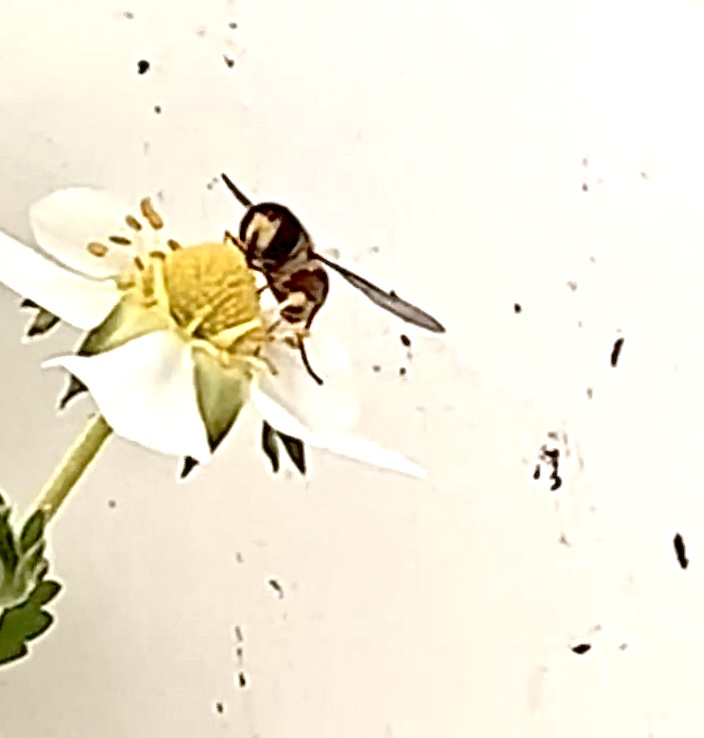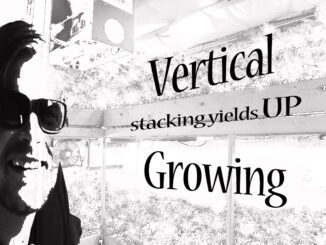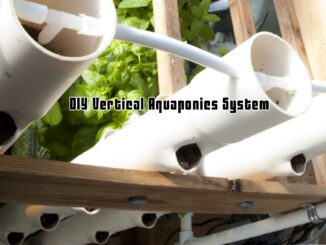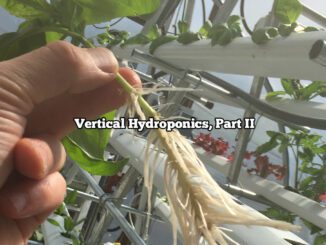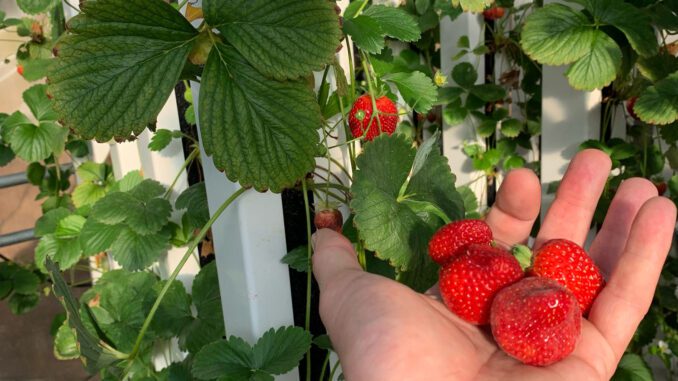
How to Grow Hydroponic Strawberries
Growing hydroponic strawberries is fun, productive and can provide a year round source of local grown berries for communities. When grown and harvested for local markets from hydroponic operations, crop quality and shelf life are typically exceptional. The berries do not require long distance transport or storage–both are factors that hurt quality and add to the environmental impact from agriculture.
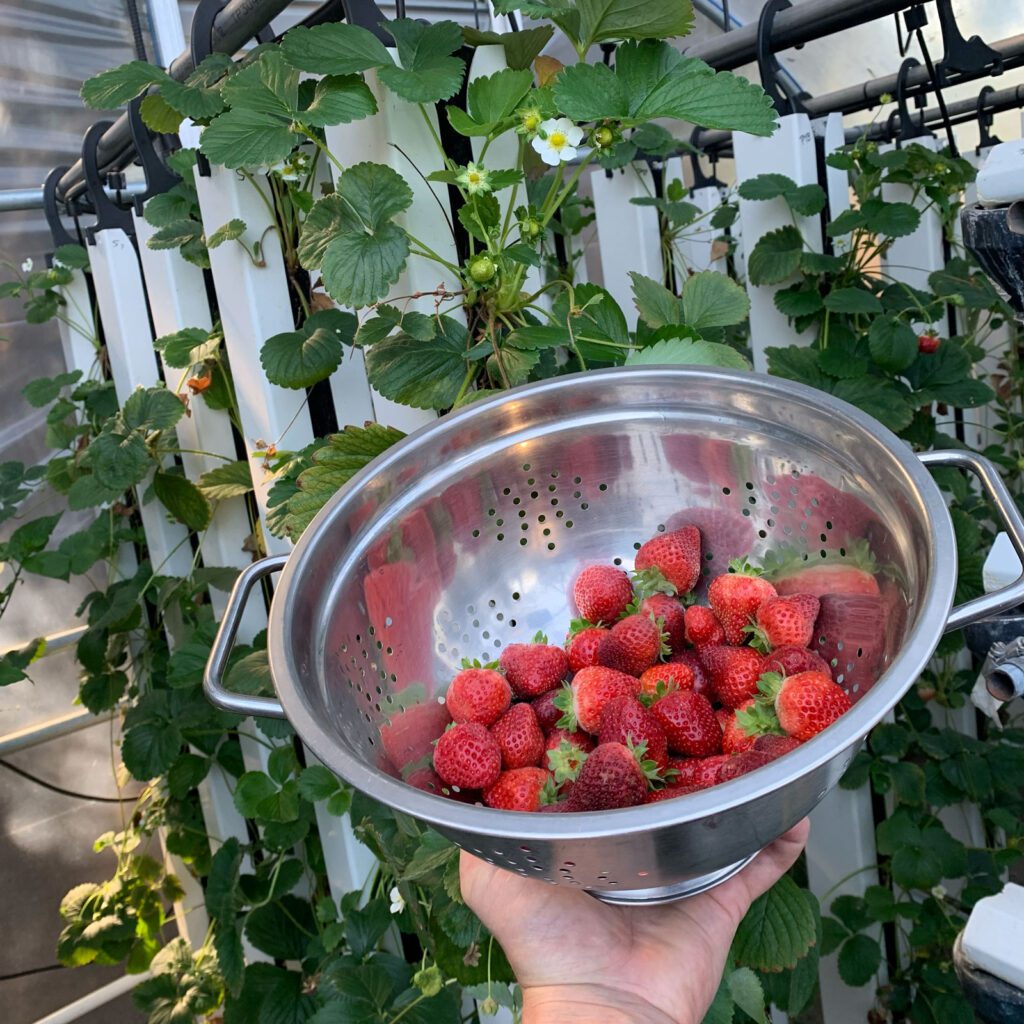
Why Grow Hydroponic Strawberries?
It has been said in recent times that about 90% of the strawberries grown in the United States originate from California.This fact indicates that there may be significant potential for more localized indoor farming production practices, for example growing in vertical hydroponic systems whether in a greenhouse or entirely indoors using LED grow lighting.
Growing hydroponic strawberries indoors in Controlled Environment Agriculture (CEA) provides the opportunity to produce crops cleaner, with less reliance on pesticides or fungicides. The indoor grower controls the environment (versus outdoor agriculture). Reducing and eliminating introductions of pests or problems can be achieved by following protocols and incorporating IPM (integrated pest management), i.e. beneficial insects and organisms are utilized.
Growing hydroponic strawberries versus soil cultivation allows growers to make better use of vertical space, i.e. vertical growing systems. These systems are lightweight versus soil garden beds, so crops can be stacked and handled with ease for efficient use of labor, automation and space.
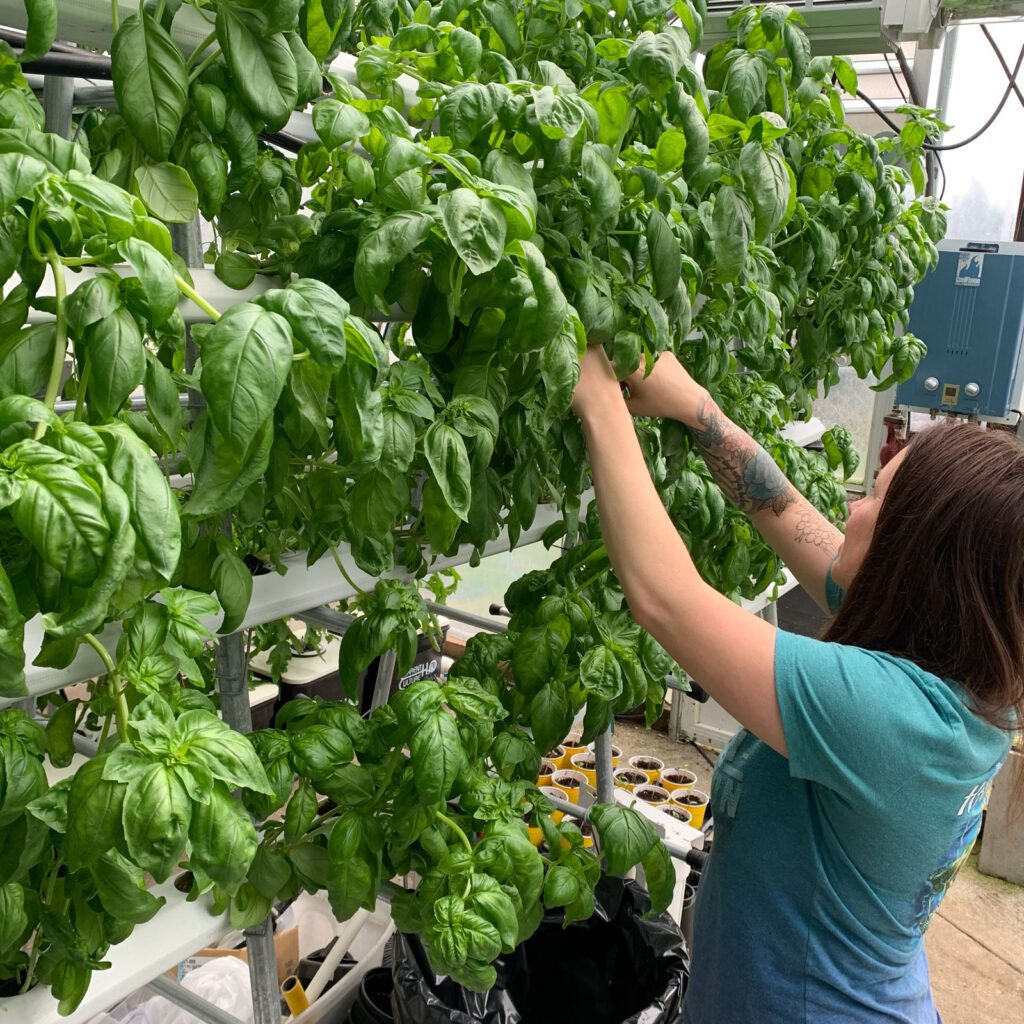
Hydroponic Strawberry Variety Selection
Strawberry plants can be classified as long day, short day or day-neutral (everbearing). This refers to the day length required for fruiting to occur. Day neutrals are most popular for growing hydroponic strawberries, for example “Albion”
Starting Hydroponic Strawberry Crops
Strawberry plants can be started from seed, however, it can take several months before plants get going–and there may be a lot of variability between the plants. This is why more often than not, strawberry crops are started from bare root stock or asexually propagated cuttings. Tissue cultured transplants are gaining popularity with serious cultivators because the young plants can be certified free of pests and pathogens.
Unfortunately, strawberries are a notoriously “dirty” crop, so commercial transplant sources for root stock or asexually propagated plants may arrive with pests and pathogens. This is something to be prepared for. When shopping for strawberry crop starts local is typically good–try your local online marketplace or check gardening chat groups. Note seasonality may be a factor in availability.
Pre-Treatment & Transplanting (Strawberry Dip)
When growing hydroponic strawberries, it is best to remove as much soil or material from the roots of the transplants (root stock is often shipped bundled in peat moss). This material will interfere with hydroponic systems and is a likely source of pathogens and pests–as is any foliage present.
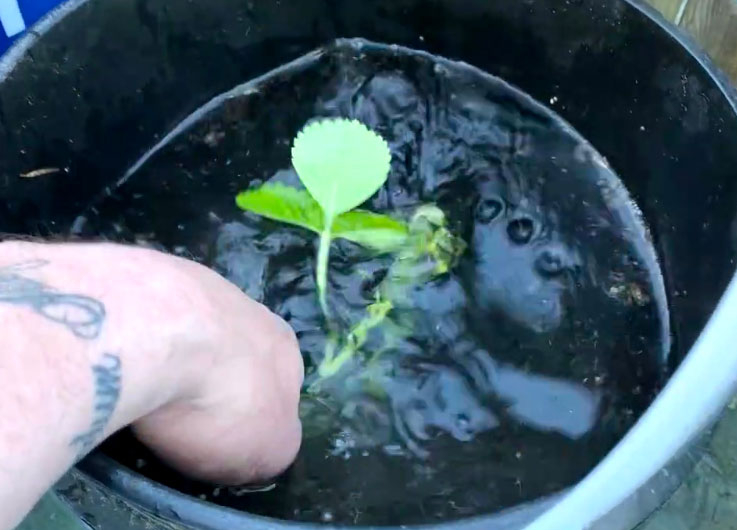
A cleansing “dip” will remove most unwanted materials and organisms after medium is shaken loose or rinsed with fresh clean water. We recommend using 3 to 6 ml of 29% Hydrogen Peroxide per gallon of water. You can test different dilutions concentrations on a few of the plants before subjecting an entire lot of plants. The goal is to have a concentration strong enough to knock back any pests or pathogens while not harming delicate plant tissue. This also provides a means to wash away any unwanted growing medium in a hygienic fashion before transplant into hydroponic growing systems. Alternatively, hypochlorous acid may be an effective substitute to 29% H2O2 and is safer to handle.
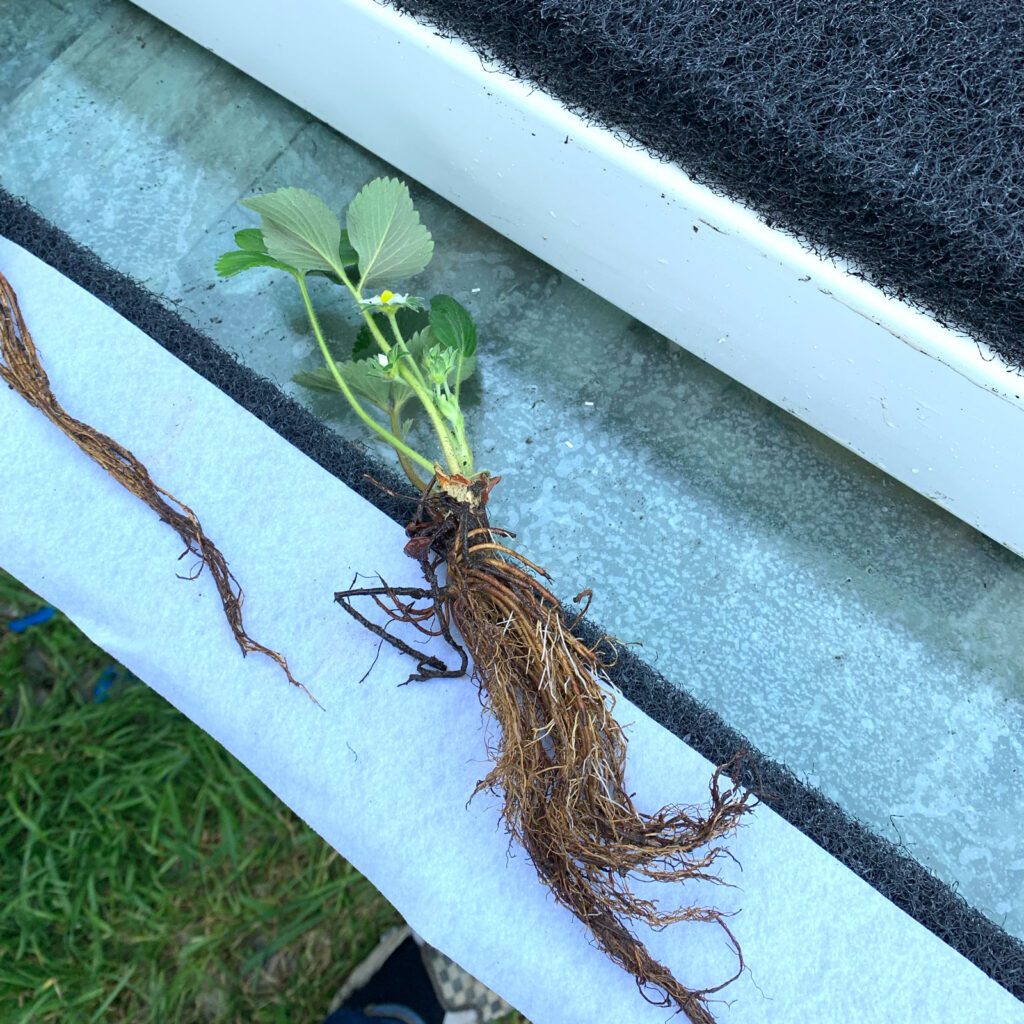
- Carefully inspect donor stock for any signs of insect or pathogen damage. Remove and discard any affected portions or severely damaged stock..
- Fill a clean tub or tote with fresh, filtered water. Add cleansing agent to desired concentration (ie hydrogen peroxide, hypochlorous acid). Dish tubs are an ideal shape and size to work with.
- Keep extra water and cleansing agent at hand. You’ll want to dump and replace the cleansing water after so many transplants have been washed in the solution before the next batch.
- Have a clean tote to collect and handle/carry your freshly cleansed transplants. Avoid exposure to hot or cold conditions and strong air movement.
- Immediately transplant once sufficient material has been cleansed; don’t keep bare stock in totes for prolonged periods.
TIP: A final spray or rinse with a diluted Vitamin B solution or microbial inoculant may help reduce shock and stimulate stronger starts
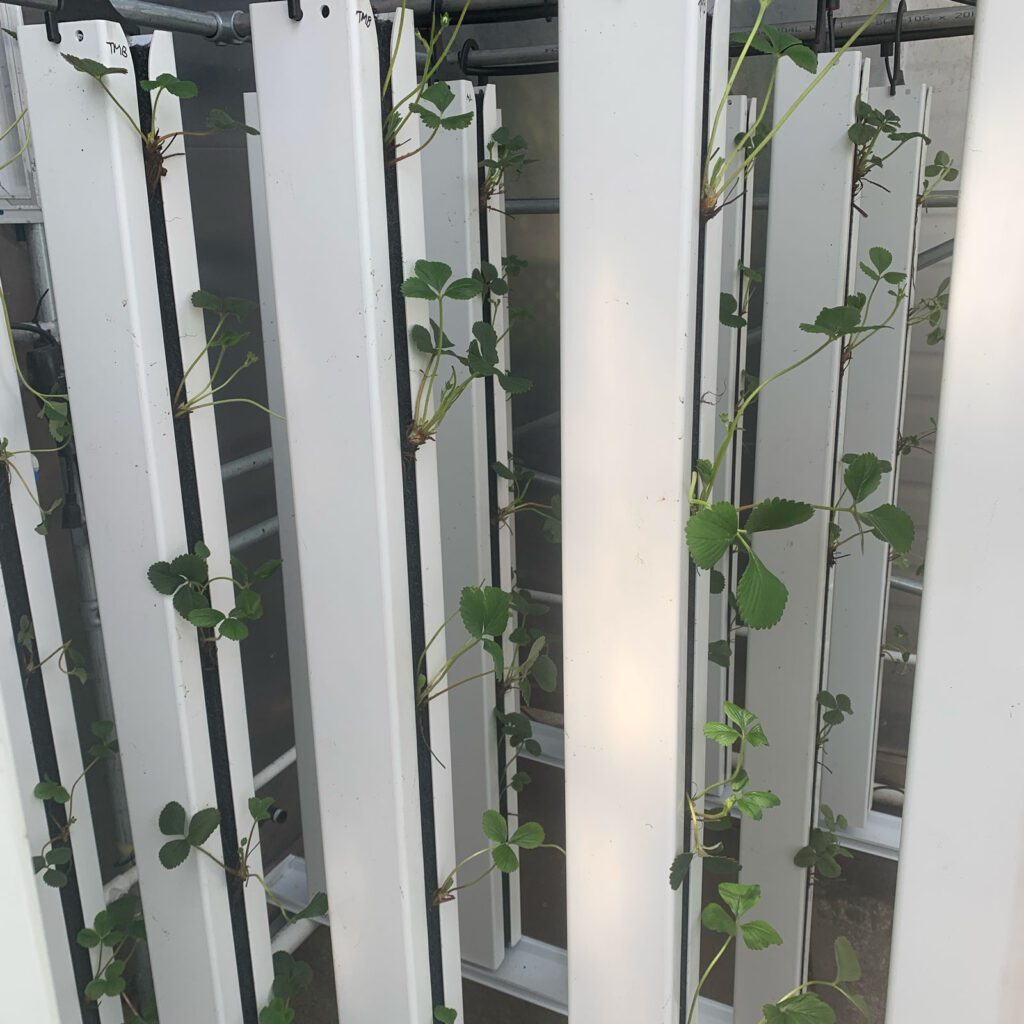
What Are Good Hydroponic Systems for Growing Strawberries?
Strawberries tend to thrive in hydroponic systems like NFT, Vertical Columns, Aeroponics, DWC, RDWC, Flood & Drain and Drip Irrigation. The crown of the strawberry plant (where shoots emerge from root) doesn’t like to stay wet, so planting depth or placement in the system requires attention. When growing hydroponic strawberries, there should be some air space between the crown of the plant and the area where the plant roots will feed in the nutrient solution. Where growing mediums like coco or rockwool are used, care should be taken not to keep the growth medium excessively wet, especially at the surface.
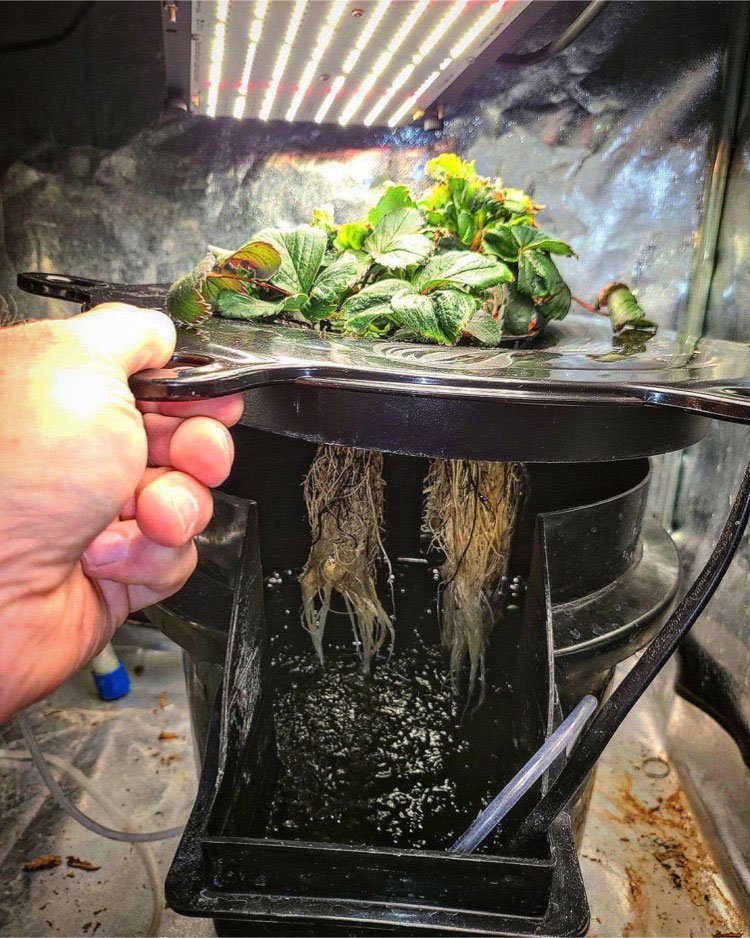
Arranging growing channels in a vertical set up or with vertical towers not only helps maximize production in a lineal foot print, it allows the berries to hang with good air circulation around them; potentially contributing to higher fruit quality.

Transplant Tip: When growing everbearing strawberry varieties like Albion, after transplant pinch off any flowers that develop to encourage some vegetative growth before allowing the plants to begin producing berries. Typically a period of two to four weeks allows enough time for plants to establish before fruit production.
General Optimal Environmental Recommendations for Hydroponic Strawberries
Temperature: 68 deg F Day / 58 deg F Night (some range is OK)
Humidity: range is OK during day, 75% RH at night is recommended
Nutrients: Full Spectrum, with ample Ca, Fe, K is recommended.
Nutrient Temperature: 65 Deg F
EC: 0.7 to 1.0 at transplant, increasing up to 1.5 to 2.0 for heavy fruit loads
pH: 5.5 to 6.5, depending on system type or growing medium
Light: 600 to 800 uMols, up to 1200 uMols depending on conditions
Carbon Dioxide: 600-800 PPM
Common Strawberry Pests & Crop Diseases
It seems people aren’t the only ones who just LOVE strawberries. You name it, and it wants your crop of berries or the foliage and roots that produce them.
Powdery Mildew and Spider Mites are common and persistent pests that occur growing hydroponic strawberries. Treatments like insecticidal soaps, sulfur dusts, etc can provide a decent measure of control while cropping.
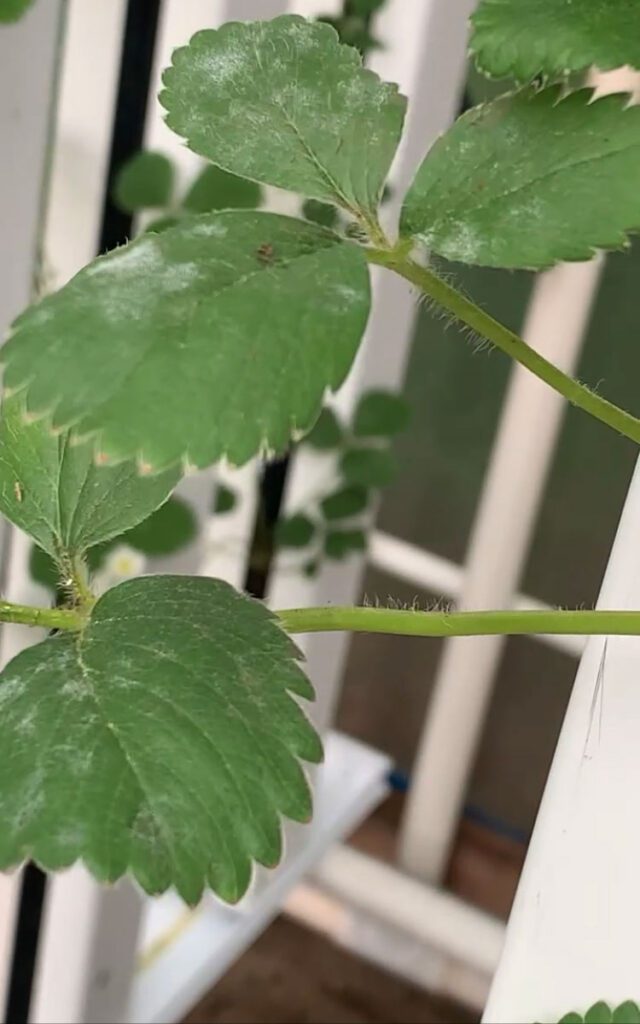
Avoidance is the best remedy; be diligent in developing and executing your “dip” method at transplant–it’s the easiest and best time to eliminate problems. Following pretreatment at transplant, beneficial insects may be introduced that are predatory to common pests like spider mites, ie persimilis
Most strawberry varieties aren’t overly sensitive to sprays, however, always test on a few plants first before subjecting the entire crop to a particular treatment.
